Raising Monarch Butterflies is a pretty fun and easy thing to do. Plus with Monarch butterfly populations on the decline, about 90% since the 1990’s due to intensive agriculture, pesticides, and urban development, it is also a very important thing to do to keep these beauties around for years to come. If you want to learn more about this beautiful creature and about its incredible migration from Canada to Central Mexico you can visit the World Wildlife Fund website by clicking here or to find out what you can do to help the Monarch population check out the National Wildlife Federation website by clicking here.
Over the past few years I have been working very hard to attract bees, butterflies, and humming birds to my garden by planting plants that are a good food source for them. I admit, it has been a bit of a challenge. I not only want plants that are attractive to wildlife, but I also want a garden that is beautiful year round. Easier said than done. For me it has been a lot of trial and error. But over the last two or three years I feel like I am going in the right direction though. This year being the best year yet with the lavender and thistle keeping the bees happy, and the Passion vines bringing in the bright orange Passion Vine Butterflies.
What I was missing was the Monarch butterflies. Last year I bought a bunch of milkweed seeds and grew them in the greenhouse. Unfortunately the greenhouse caught fire, and that dream was lost… along with the side of my house. OUCH! To tell you the truth the seeds wouldn’t have made it anyway, I am terrible at sowing seeds. But lets blame it in the fire anyway. So… this year I decided to buy milkweed plants from the nursery and wait for the Monarch to find me naturally. After two days of waiting and watching, there were no monarchs. Yes, I know two days is not enough time, but I am not known for my patience. I decided that I was just going to buy monarch caterpillars online. I found a site that offered 14 to 16 larva for only $18! YEEHAW! Reading further down the description it said that shipping was $26. I took back my Yeehaw. After reading more about the caterpillars I learned that you need to have a lot of milkweed available right away. I mean A LOT! MonarchWatch.org has all the info you need in more detail.
So with the price of the larva high and the amount of milkweed needed, I thought my dreams of having Monarchs this year were down the toilet. That was until I went to my local nursery looking to see what the latest and greatest plants were, and my hubby discovered a little shelf of 1 gallon milkweed plants for $8. Not too bad, but that wasn’t the best part. Someone who worked at the nursery had marked each plant with how many Monarch eggs the plant had. WE WERE BACK IN BUSINESS!! I grabbed the plant and rode home with it in my lap giddy as a school girl.
The plant had three tiny monarch eggs. To keep them safe I kept the plant on my covered deck away from any hungry birds. Just a few days after I had bought the plant, I had three little caterpillars. Every day I would check on my little green striped friends. I loved watching them eat, poop, and grow. I really had no idea just how much they would poop. Kinda gross really, but all in the name of Monarch conservation I say!
A few days after the eggs hatched I ordered a Trasfit Pop-up Insect and Butterfly Habitat Cage Terrarium – 24 Inches Tall for $10.99 off of Amazon, which came the next day. SHWEET!! My little caterpillars will be happy and safe. At this point I had one plant and three caterpillars. I wasn’t sure if this would be enough food for them. As it turns out, it was the perfect amount. It started off a full plant, and by the time they were ready to begin the chrysalis stage the plant was 90% eaten.
Once they had eaten their fill of that poor plant, they were ready to begin the Chrysalis stage. Time to J hang!
Now it was time to hurry up and wait. Once all three caterpillars were in the chrysalis stage, I removed the plant and placed newspaper on the bottom of the butterfly habitat. One little detail they never show you in those cute children’s books about caterpillars turning into butterflies is just how gross the process is. Bloody blobs. That’s all I am going to say.
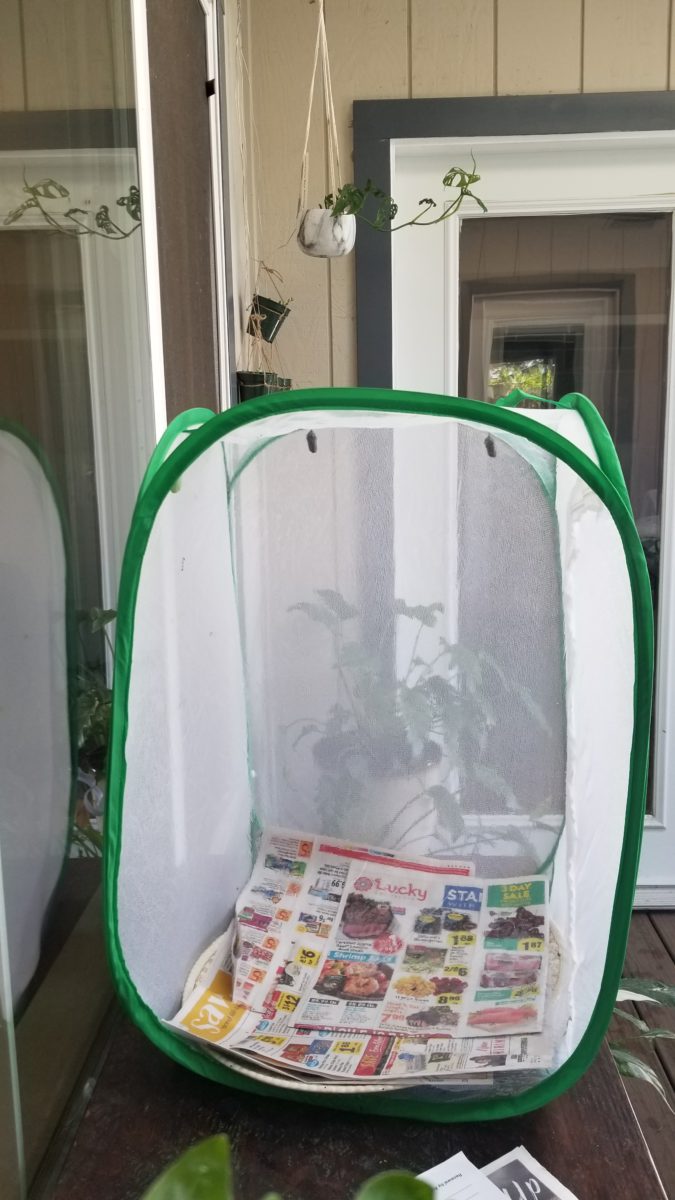
To say I was excited when the day came for them to emerge from the chrysalis is an understatement. I must have visited the habitat fifty times that morning. There was no way I was going to miss the big event. I knew it was time when the chrysalis turned black, and you could very easily see the beautiful pattern of the wings folded inside.
In my brilliant thinking I decided that I was going to make a larger butterfly habitat and try to maybe breed them for more eggs. I had a male and a female (different parents) and I had thought I set up a pretty nice little habitat for them.
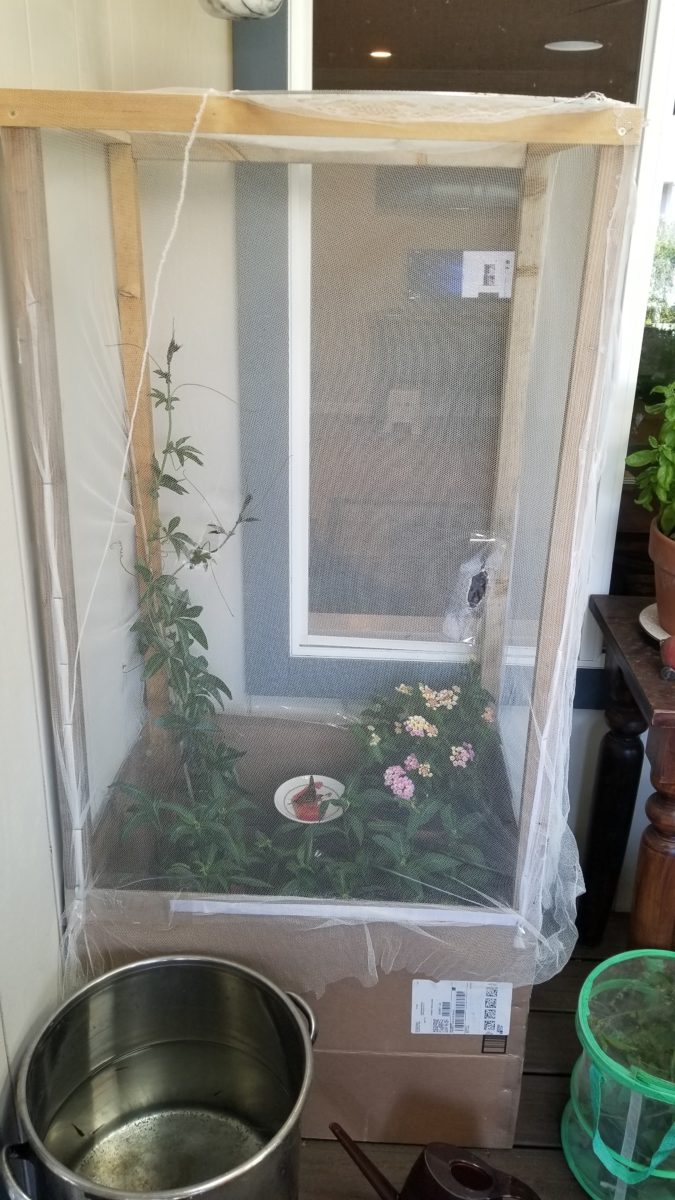
After a week or so of caring for them with fresh flowers, milkweed, and watermelon, I got one egg and two sad butterflies. Was it worth the trouble? In my experience…No. So the lesson learned for me is, if the weather is nice, not too windy or raining, set them free. Throughout this whole process I had been planting milkweed in the garden preparing for the day they were released. As hard as it was to do so, it was the best decision.
I let them go and they immediately came alive. I have been watching them flutter between my yard and the neighbor’s. Right now I have four Monarchs who are in the chrysalis form, two caterpillars that still have about five days before they go into chrysalis form, and one egg. All the caterpillars came from the nursery as eggs on the milkweed I bought. I will be searching for more caterpillar eggs on the milkweed that I planted in the garden. The ones I find will go into the habitat where they can grow safely, but I will release them right away.
The butterfly season still has a long way to go and I am enjoying every minute of it. Now that I have the Monarch butterfly project well under way, I am turning my sites on another beauty, the Swallowtail butterfly.
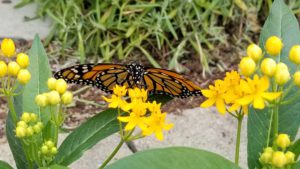
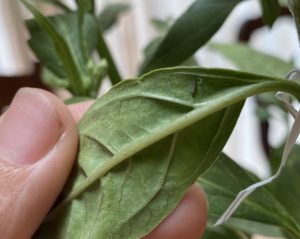
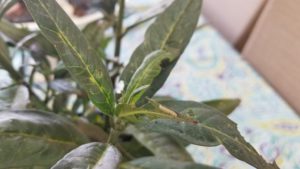
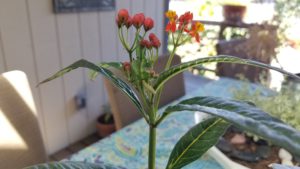
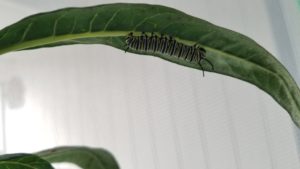
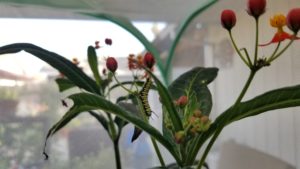
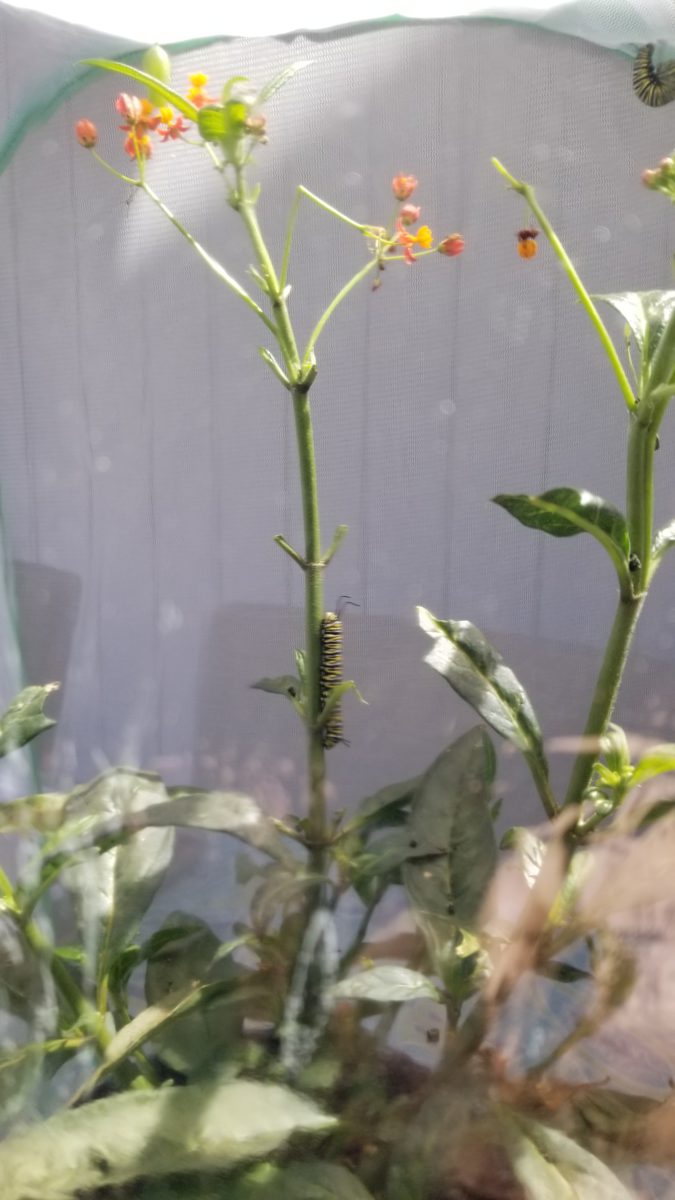
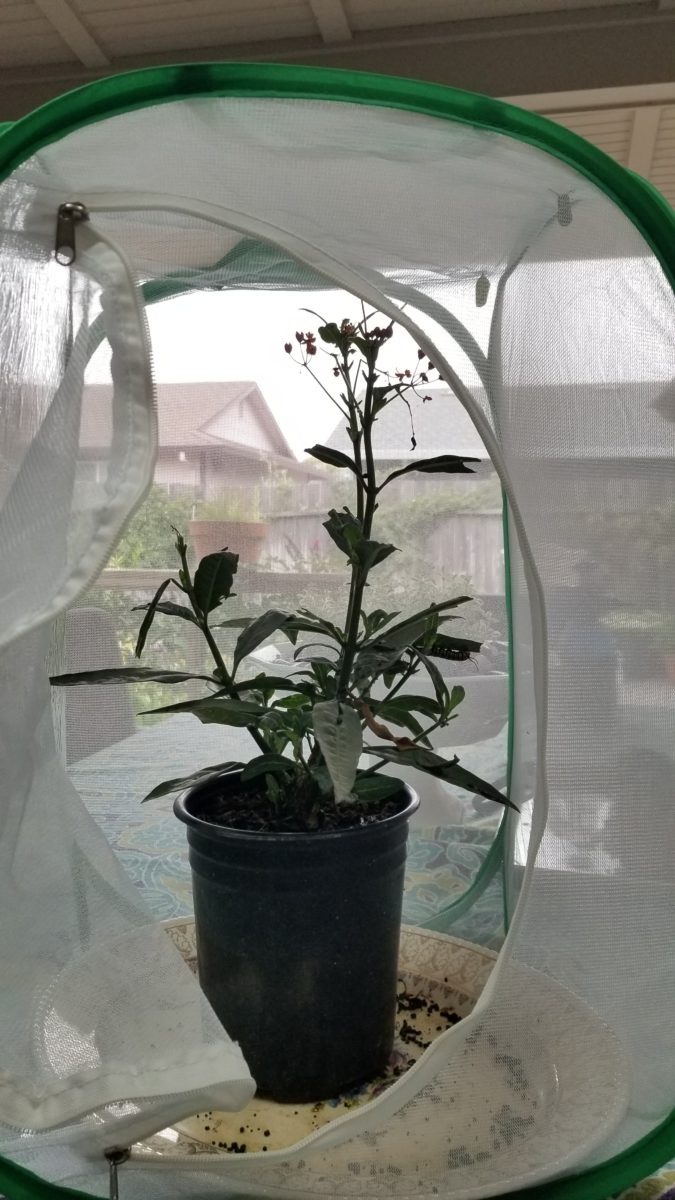
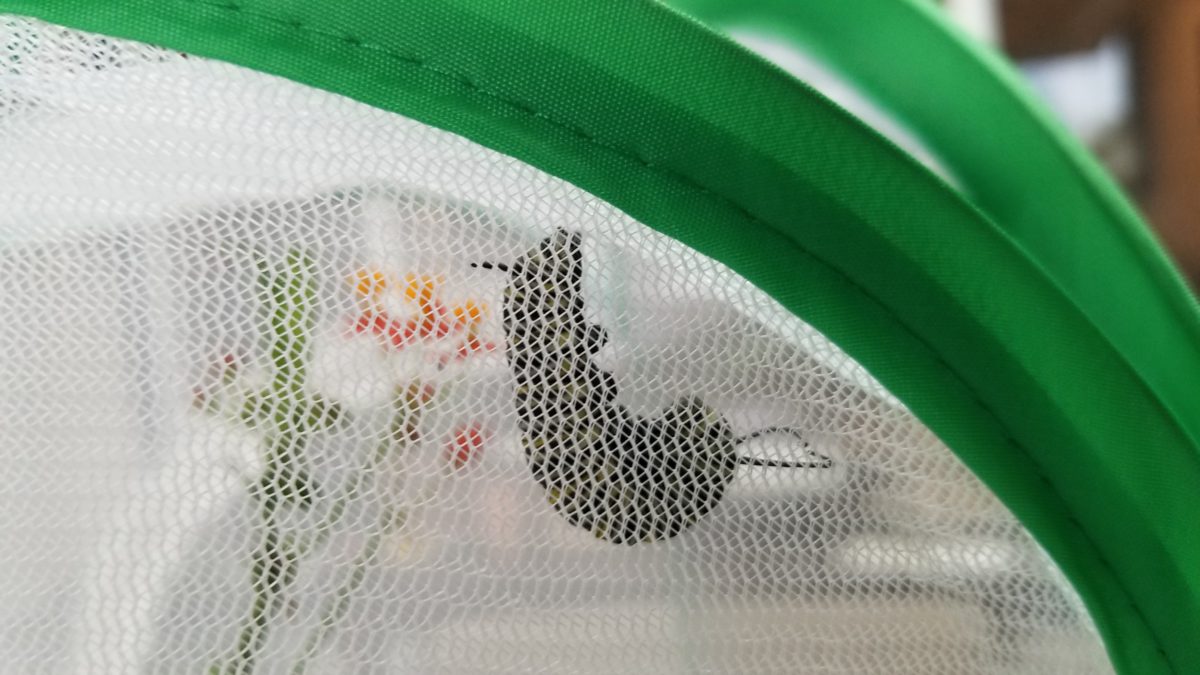
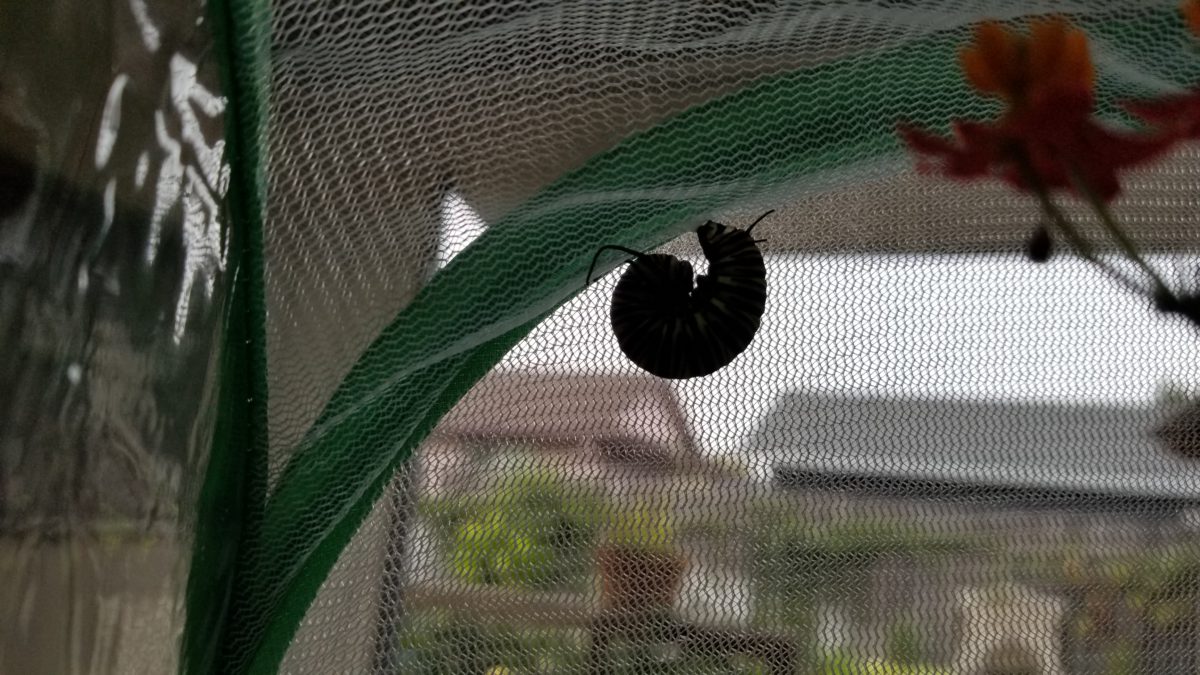
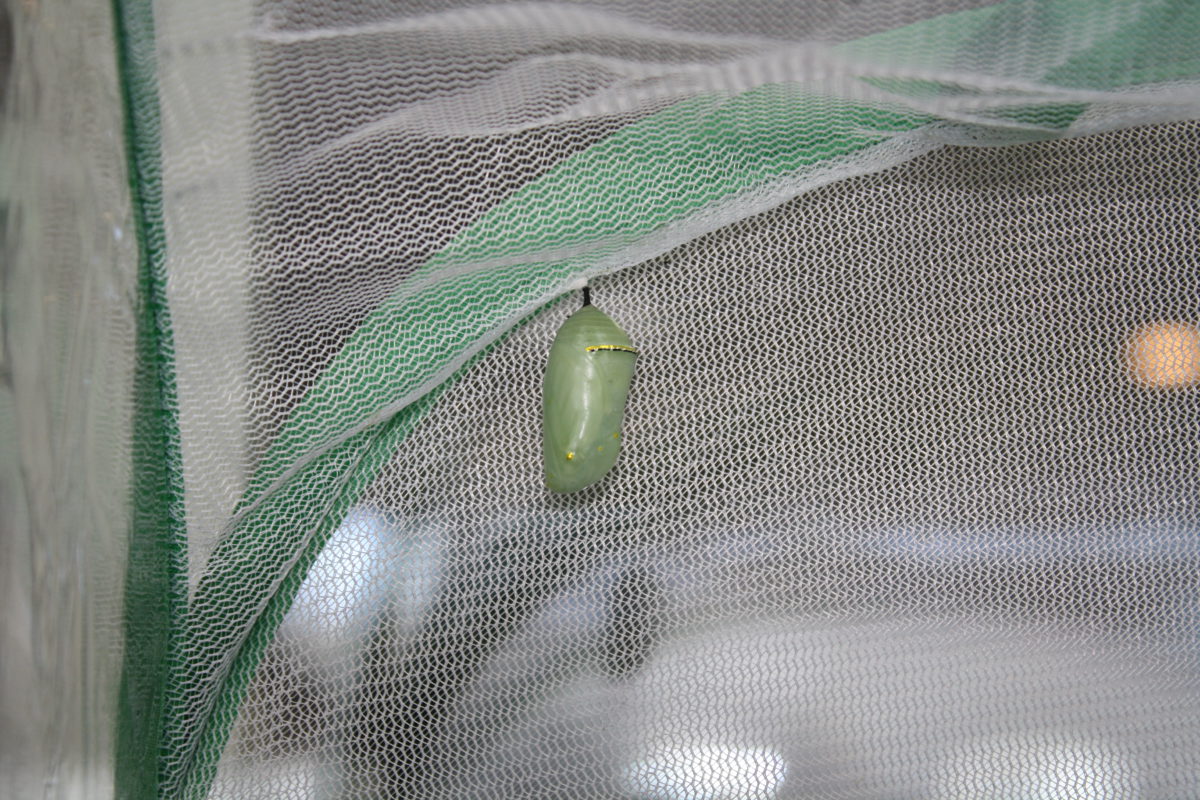


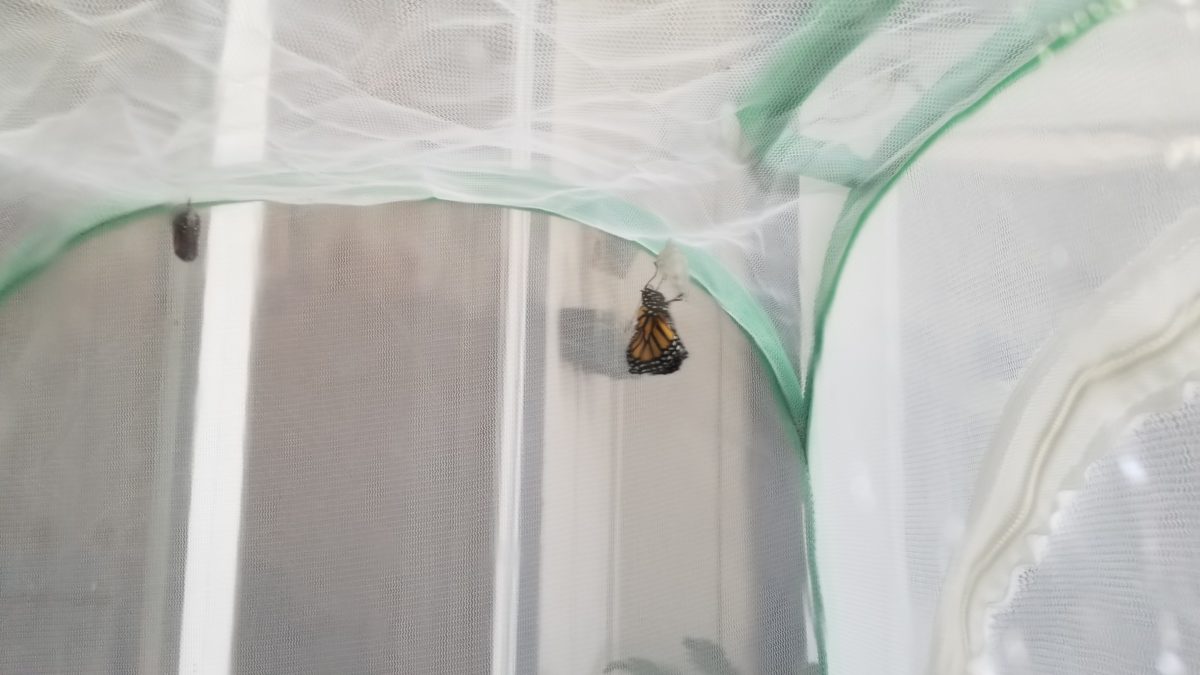
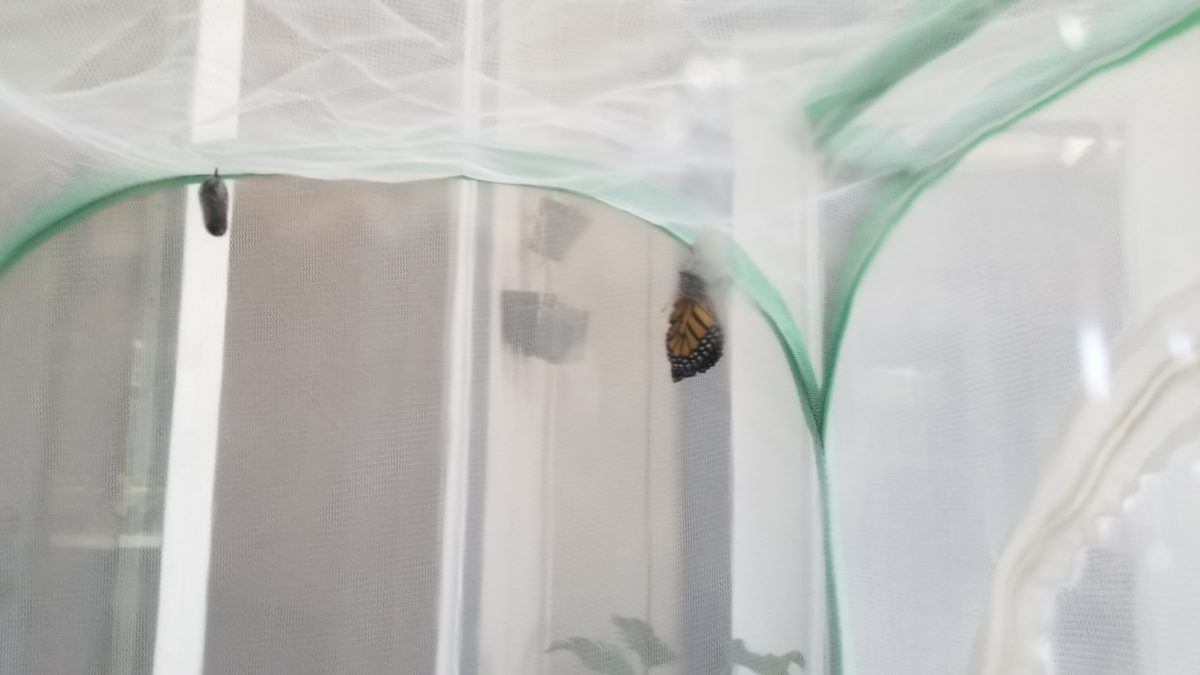
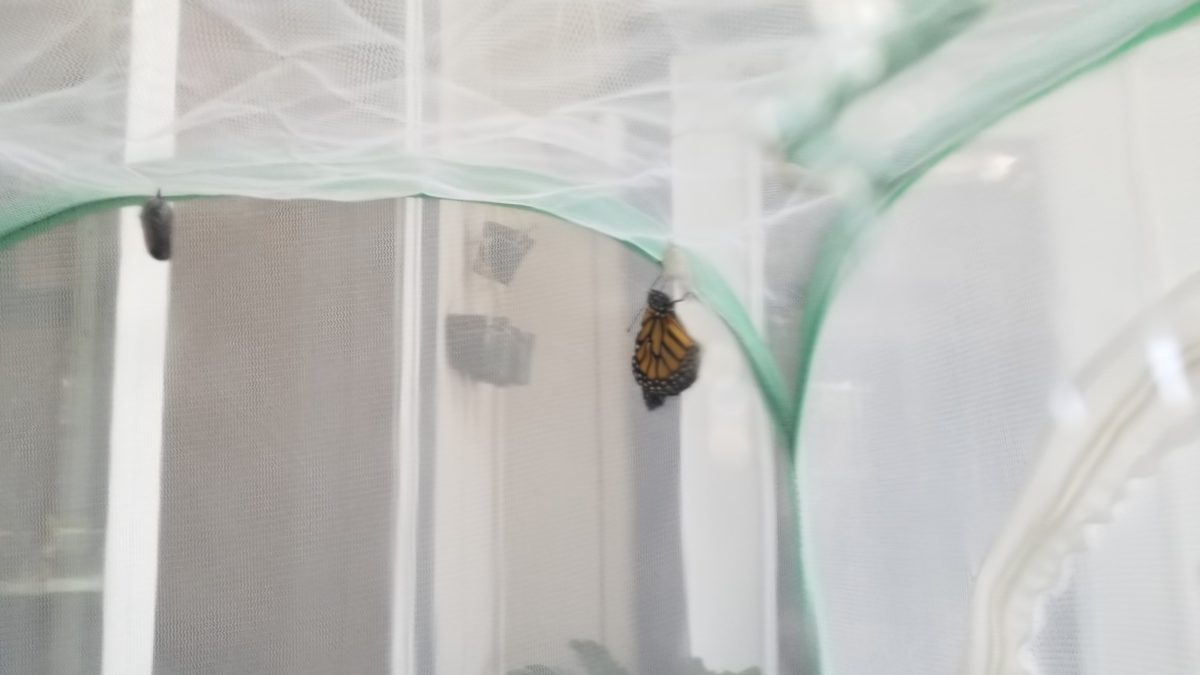
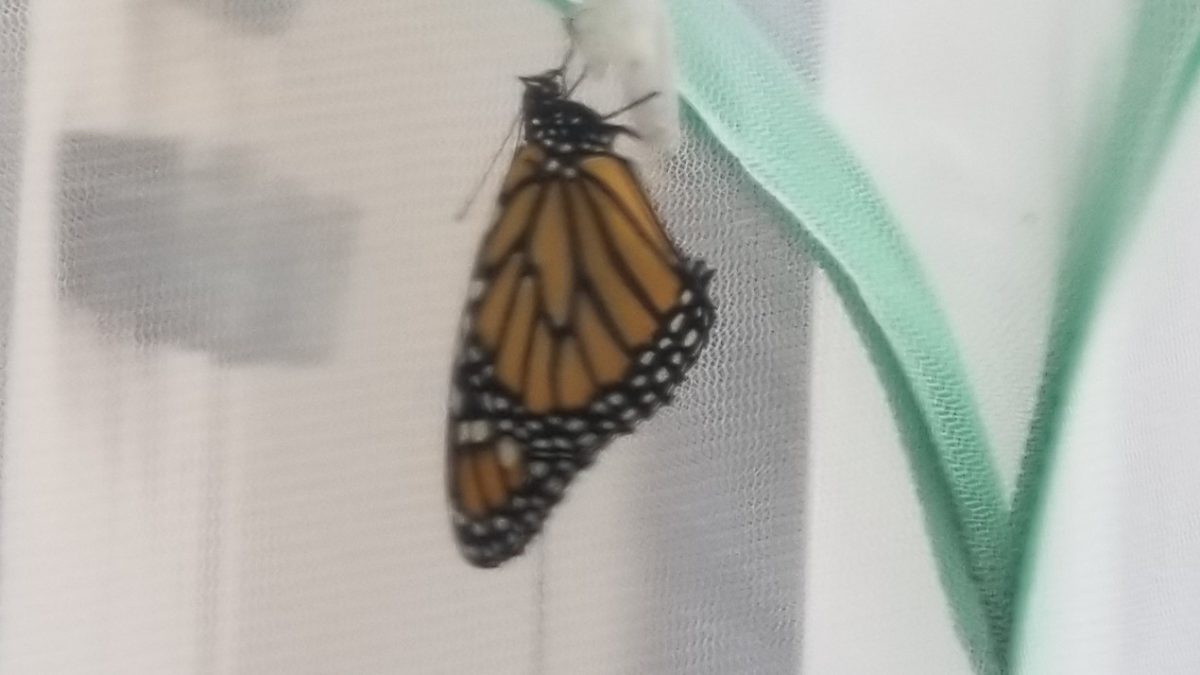


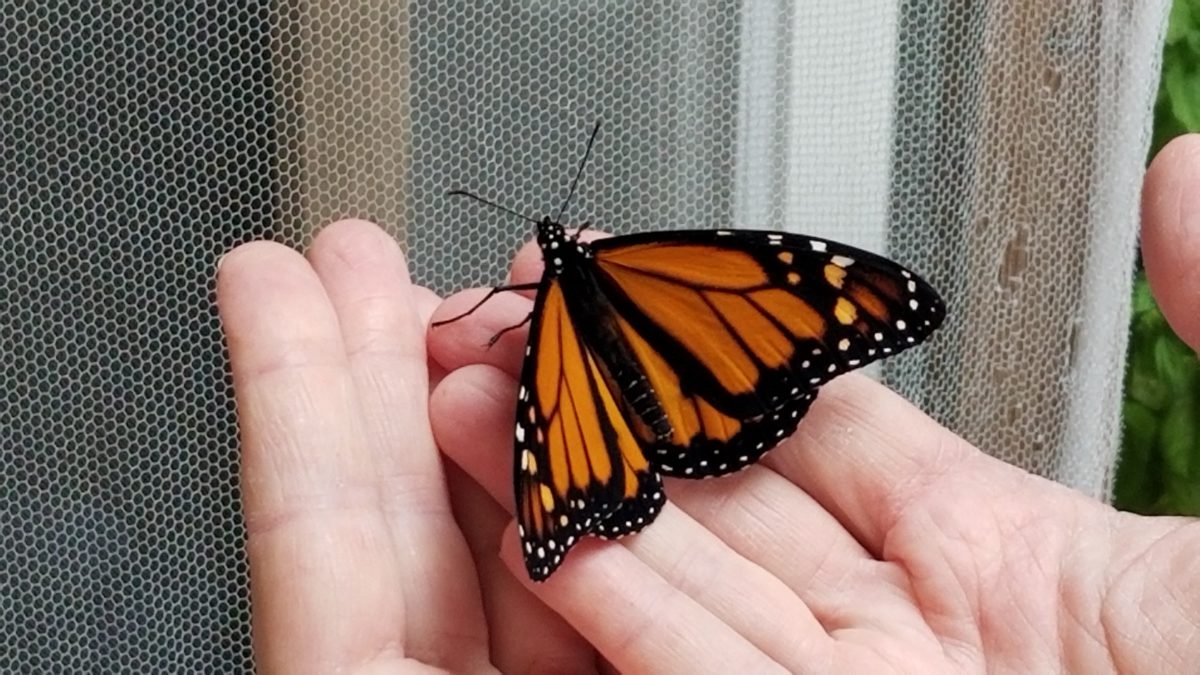
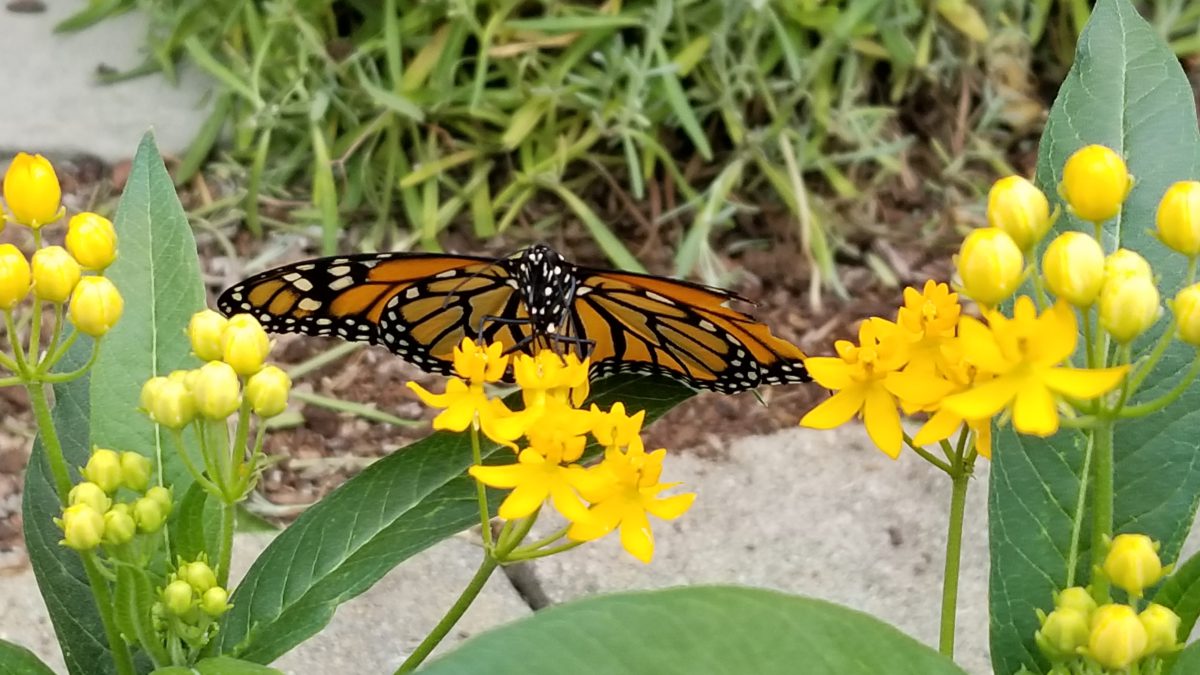
 June In The Garden
June In The Garden